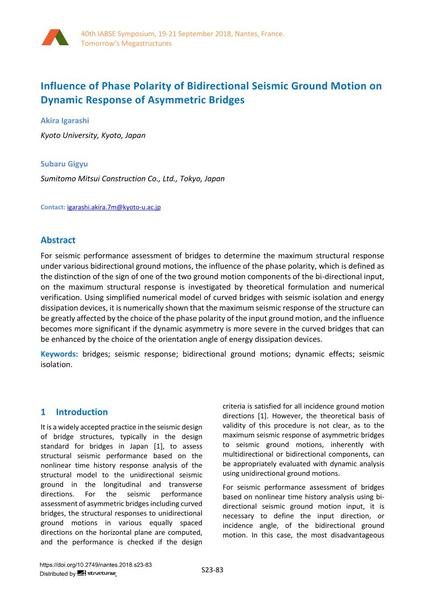Influence of Phase Polarity of Bidirectional Seismic Ground Motion on Dynamic Response of Asymmetric Bridges

|
|
|||||||||||
Détails bibliographiques
| Auteur(s): |
Akira Igarashi
(Kyoto University, Kyoto, Japan)
Subaru Gigyu (Sumitomo Mitsui Construction Co., Ltd., Tokyo, Japan) |
||||
|---|---|---|---|---|---|
| Médium: | papier de conférence | ||||
| Langue(s): | anglais | ||||
| Conférence: | IABSE Symposium: Tomorrow’s Megastructures, Nantes, France, 19-21 September 2018 | ||||
| Publié dans: | IABSE Symposium Nantes 2018 | ||||
|
|||||
| Page(s): | S23-83 | ||||
| Nombre total de pages (du PDF): | 8 | ||||
| DOI: | 10.2749/nantes.2018.s23-83 | ||||
| Abstrait: |
For seismic performance assessment of bridges to determine the maximum structural response under various bidirectional ground motions, the influence of the phase polarity, which is defined as the distinction of the sign of one of the two ground motion components of the bi-directional input, on the maximum structural response is investigated by theoretical formulation and numerical verification. Using simplified numerical model of curved bridges with seismic isolation and energy dissipation devices, it is numerically shown that the maximum seismic response of the structure can be greatly affected by the choice of the phase polarity of the input ground motion, and the influence becomes more significant if the dynamic asymmetry is more severe in the curved bridges that can be enhanced by the choice of the orientation angle of energy dissipation devices. |
||||
| Mots-clé: |
ponts
|
||||
